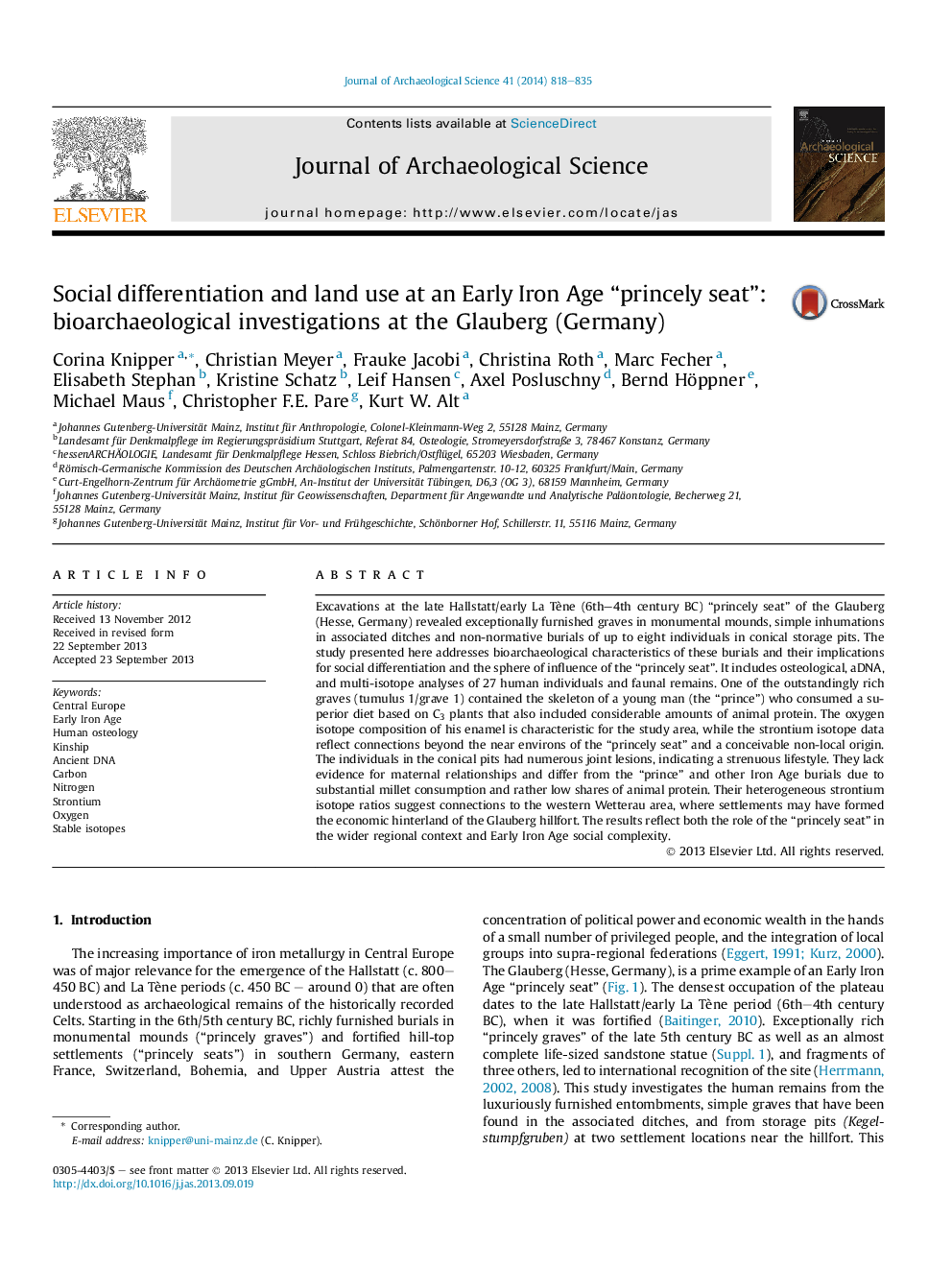| Article ID | Journal | Published Year | Pages | File Type |
|---|---|---|---|---|
| 7444195 | Journal of Archaeological Science | 2014 | 18 Pages |
Abstract
Excavations at the late Hallstatt/early La Tène (6th-4th century BC) “princely seat” of the Glauberg (Hesse, Germany) revealed exceptionally furnished graves in monumental mounds, simple inhumations in associated ditches and non-normative burials of up to eight individuals in conical storage pits. The study presented here addresses bioarchaeological characteristics of these burials and their implications for social differentiation and the sphere of influence of the “princely seat”. It includes osteological, aDNA, and multi-isotope analyses of 27 human individuals and faunal remains. One of the outstandingly rich graves (tumulus 1/grave 1) contained the skeleton of a young man (the “prince”) who consumed a superior diet based on C3 plants that also included considerable amounts of animal protein. The oxygen isotope composition of his enamel is characteristic for the study area, while the strontium isotope data reflect connections beyond the near environs of the “princely seat” and a conceivable non-local origin. The individuals in the conical pits had numerous joint lesions, indicating a strenuous lifestyle. They lack evidence for maternal relationships and differ from the “prince” and other Iron Age burials due to substantial millet consumption and rather low shares of animal protein. Their heterogeneous strontium isotope ratios suggest connections to the western Wetterau area, where settlements may have formed the economic hinterland of the Glauberg hillfort. The results reflect both the role of the “princely seat” in the wider regional context and Early Iron Age social complexity.
Related Topics
Physical Sciences and Engineering
Materials Science
Materials Science (General)
Authors
Corina Knipper, Christian Meyer, Frauke Jacobi, Christina Roth, Marc Fecher, Elisabeth Stephan, Kristine Schatz, Leif Hansen, Axel Posluschny, Bernd Höppner, Michael Maus, Christopher F.E. Pare, Kurt W. Alt,
